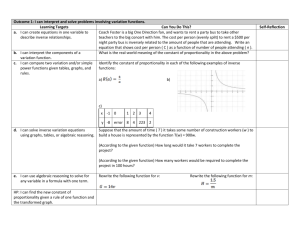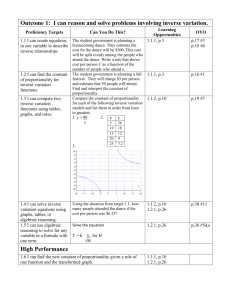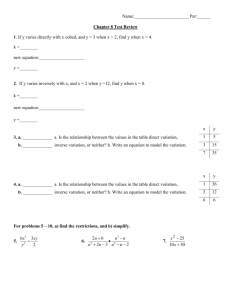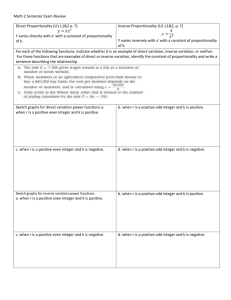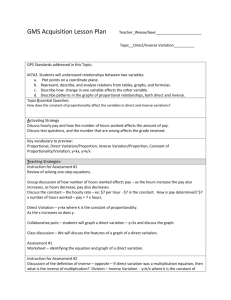I can reason and solve problems involving inverse variation
advertisement
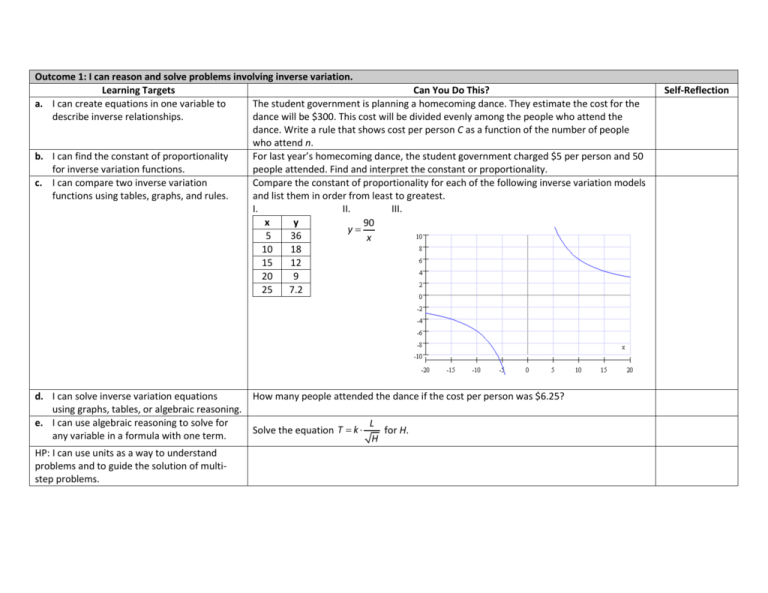
Outcome 1: I can reason and solve problems involving inverse variation. Learning Targets Can You Do This? a. I can create equations in one variable to The student government is planning a homecoming dance. They estimate the cost for the describe inverse relationships. dance will be $300. This cost will be divided evenly among the people who attend the dance. Write a rule that shows cost per person C as a function of the number of people who attend n. b. I can find the constant of proportionality For last year’s homecoming dance, the student government charged $5 per person and 50 for inverse variation functions. people attended. Find and interpret the constant or proportionality. c. I can compare two inverse variation Compare the constant of proportionality for each of the following inverse variation models functions using tables, graphs, and rules. and list them in order from least to greatest. I. II. III. x y 90 y 5 36 x 10 18 15 12 20 9 25 7.2 d. I can solve inverse variation equations using graphs, tables, or algebraic reasoning. e. I can use algebraic reasoning to solve for any variable in a formula with one term. HP: I can use units as a way to understand problems and to guide the solution of multistep problems. How many people attended the dance if the cost per person was $6.25? Solve the equation T k L for H. H Self-Reflection
